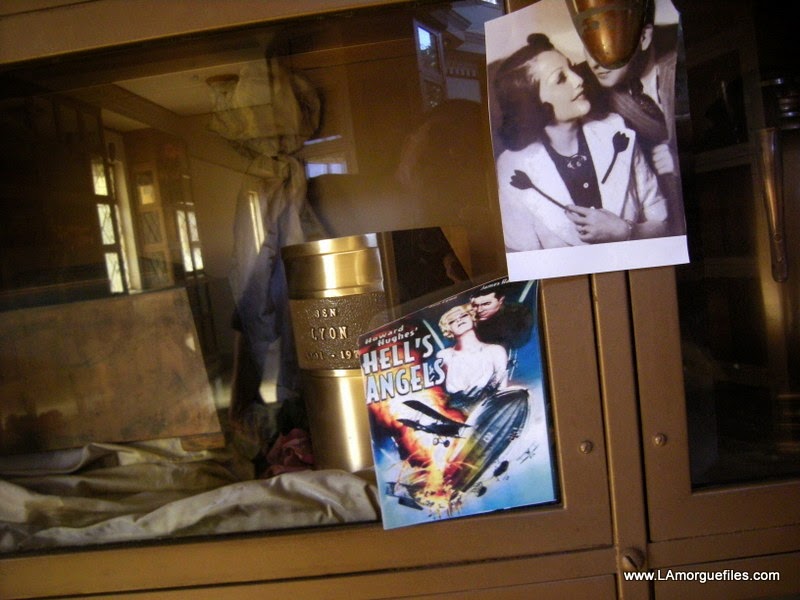Bebe Daniels (January 14, 1901 – March 16, 1971) was an American actress, singer, dancer, writer and producer. She began her career in Hollywood during the silent movie era as a child actress, became a star in musicals such as 42nd Street, and later gained further fame on radio and television in Britain. In a long career, Bebe Daniels made over 230 films.
Early life and career
Daniels was born Phyllis Virginia Daniels (Bebe was a childhood nickname) in Dallas, Texas. Her father was a theater manager and her mother a stage actress.[1] The family moved to Los Angeles, California in her childhood and she began her acting career at the age of four in the first version of The Squaw Man. That same year she also went on tour in a stage production of Shakespeare's Richard III. The following year she participated in productions by Oliver Morosco and David Belasco.
By the age of seven Daniels had her first starring role in film as the young heroine in A Common Enemy. At the age of nine she starred as Dorothy Gale in the 1910 short film The Wonderful Wizard of Oz. At the age of fourteen she starred opposite film comedian Harold Lloyd (above) in a series of two-reel comedies starting with the 1915 film Giving Them Fits. The two eventually developed a publicized romantic relationship and were known in Hollywood as "The Boy" and "The Girl."[2]
In 1919, she decided to move to greater dramatic roles and accepted a contract offering from Cecil B. DeMille, who gave her secondary roles in such films as Male and Female (1919), Why Change Your Wife? (1920), and The Affairs of Anatol (1921).
Later life and career
In the 1920s, Daniels was under contract with Paramount Pictures. She made the transition from child star to adult in Hollywood by 1922 and by 1924 was playing opposite Rudolph Valentino in Monsieur Beaucaire. Following this she was cast in a number of light popular films, namely Miss Bluebeard, The Manicure Girl, and Wild Wild Susan. Paramount dropped her contract with the advent of talking pictures. Daniels was hired by Radio Pictures (later known as RKO) to star in one of their biggest productions of the year. She also starred in the 1929 talkie Rio Rita. It proved to be one of the most successful films of that year, and Bebe Daniels found herself a star and RCA Victor hired her to record several records for their catalog.
Radio Pictures starred her in a number of musicals including Dixiana (1930) and Love Comes Along (1930). Towards the end of 1930, Bebe Daniels appeared in the musical comedy Reaching for the Moon. However, by this time musicals had gone out of fashion so that most of the musical numbers from the film had to be removed before it could be released. Daniels had become associated with musicals and so Radio Pictures did not renew her contract. Warner Brothers realized what a box office draw she was and offered her a contract which she accepted. During her years at Warner Brothers she starred in such pictures as My Past (1931), Honor of the Family (1931) and the 1931 pre-code version of The Maltese Falcon, which was eventually eclipsed by John Huston's legendary 1941 version with Humphrey Bogart. In 1932, she appeared in Silver Dollar (1932) and the successful Busby Berkeley choreographed musical comedy 42nd Street (1933) in which she sang once again. That same year she played opposite John Barrymore in Counsellor at Law. Her last film for the Warner Brothers was Registered Nurse (1934).
She retired from Hollywood in 1935. With her husband, film actor Ben Lyon (above), whom she married in 1930, she moved to London. A few years later, Daniels starred in the London production of Panama Hattie in the title role originated by Ethel Merman. The Lyons then did radio shows for the BBC. Most notably, they starred in the series Hi Gang!, continuing for decades and enjoying considerable popularity during World War II. Daniels wrote most of the dialogue for the Hi Gang radio show. The couple remained through the days of the The Blitz.
Following the war, Daniels was awarded the Medal of Freedom by Harry S. Truman for war service. In 1945 she returned to Hollywood for a short time to work as a film producer for Hal Roach and Eagle-Lion Films. She returned to the UK in 1948 and lived there for the remainder of her life. Daniels, her husband, her son Richard and her daughter Barbara all starred in the radio sitcom Life With The Lyons (1951 to 1961), which later made the transition to television.
Death
On March 16, 1971, Daniels died of a cerebral hemorrhage in London at the age of 70.[4] Her remains were cremated at London's Golders Green Crematorium and the ashes returned to the United States; she was interred with her husband Ben Lyon in the Chapel Columbarium at the Hollywood Forever Cemetery in Hollywood, California.
Footnotes
1.^ Golden, Eve (2001). Golden Images: 41 Essays on Silent Film Stars. McFarland. p. 18.
2.^ The Girl and The Boy, "Bebe and Harold Were A Perfect Match On and Off The Screen" by Tim Lussier
3.^ Vanity Fair magazine September 1921
4.^ Donnelley, Paul (November 1, 2005). Fade to Black: A Book of Movie Obituaries. Omnibus Press. p. 301.
5.^ "What a Night (1928)". Turner Classic Movies.
References
The Times, Bebe Daniels American star who made a hit on British radio, March 17, 1971, Page 18.


.jpg)


.jpg)
.jpg)




No comments:
Post a Comment